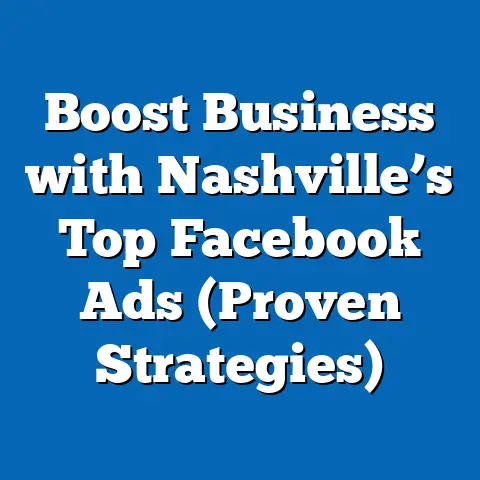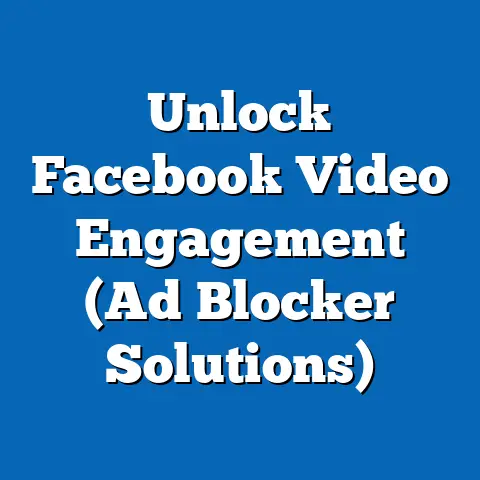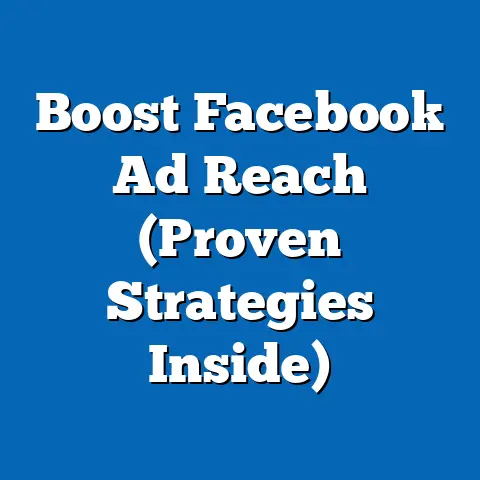Master Facebook Ads Training 2025 (Unlock Profitable Strategies)
Imagine stepping into a time machine and traveling back to 2004. Facebook, then “The Facebook,” was a burgeoning social network, and its advertising was… well, let’s just say it was rudimentary. Think simple text ads that blended into the sidebar, easily overlooked and largely ineffective. Fast forward to today, and Facebook advertising has undergone a metamorphosis. It’s no longer a simple afterthought; it’s a sophisticated, data-driven powerhouse, capable of connecting businesses with billions of potential customers worldwide.
The Evolution of Facebook Ads
To truly appreciate the power of Facebook advertising today, it’s essential to understand where it all began. My journey with Facebook ads started around 2010, and even then, the platform was a far cry from what it is now. The targeting options were limited, the creative formats were basic, and the overall feel was much less sophisticated.
From Humble Beginnings to Advertising Giant
Facebook launched its advertising platform in 2004, initially offering simple text-based ads targeted based on basic demographic information like age, location, and interests. These early ads were often seen as intrusive and ineffective, a far cry from the targeted, engaging experiences we expect today.
- 2007: Introduction of Facebook Pages for businesses, allowing them to build a presence on the platform.
- 2012: Acquisition of Instagram, opening up new advertising opportunities and expanding reach.
- 2013: Launch of Power Editor, a more advanced tool for managing complex campaigns.
- 2015: Introduction of video ads, capitalizing on the growing popularity of video content.
- 2016: Launch of Facebook Pixel, a game-changer for tracking conversions and optimizing ad performance.
- 2018: Focus on transparency and ad quality following concerns about data privacy and misinformation.
- 2020 Onward: Increased emphasis on AI and automation to improve ad targeting and creative generation.
The numbers speak for themselves. Facebook’s ad revenue has grown exponentially over the years, reaching billions of dollars per quarter. User engagement metrics have also steadily increased, demonstrating the platform’s continued relevance and effectiveness for both users and advertisers. According to Statista, Facebook’s advertising revenue was estimated to reach $134.9 billion in 2024, a testament to its enduring power in the digital advertising landscape.
Key Takeaway: Understanding the history of Facebook ads provides valuable context for appreciating the platform’s current capabilities and anticipating future developments.
The Current Landscape of Facebook Advertising (2025)
Fast forward to 2025, and Facebook advertising is a completely different ballgame. The platform has become incredibly sophisticated, offering a vast array of targeting options, creative formats, and optimization tools.
Navigating the 2025 Ad Ecosystem
In 2025, Facebook ads are no longer just about placing a simple ad in front of a broad audience. It’s about precision, personalization, and creating engaging experiences that resonate with individual users. Here are some key trends and updates that are shaping the current landscape:
- Enhanced AI and Machine Learning: Facebook’s algorithms are now more powerful than ever, using AI and machine learning to optimize ad targeting, creative delivery, and bidding strategies in real-time. I’ve seen firsthand how AI-powered tools can dramatically improve campaign performance, often exceeding the results I could achieve manually.
- Privacy-Focused Advertising: In response to growing concerns about data privacy, Facebook has introduced new policies and features that prioritize user privacy while still allowing for effective advertising. This includes stricter data collection rules and enhanced transparency around ad targeting.
- Mobile-First Dominance: Mobile devices continue to be the primary way people access Facebook, so it’s crucial to design ads that are optimized for mobile viewing. This means using vertical video formats, concise copy, and clear calls to action.
- The Rise of Short-Form Video: Platforms like TikTok and Instagram Reels have popularized short-form video content, and Facebook has responded by prioritizing video ads and introducing new video creation tools.
- Emphasis on Authenticity and Community: Users are increasingly drawn to authentic content that fosters a sense of community. Brands that can create genuine connections with their audience are more likely to succeed on Facebook.
According to recent data, over 98% of Facebook users access the platform via mobile devices, highlighting the importance of mobile-first marketing. Moreover, video ads have been shown to generate significantly higher engagement rates than static image ads, underscoring the need to embrace video content.
Key Takeaway: Staying up-to-date with the latest trends and updates is essential for maximizing your Facebook ad performance in 2025.
Understanding the Facebook Ads Ecosystem
Before diving into specific strategies, it’s crucial to understand the core components of the Facebook advertising ecosystem. Think of it as the engine that powers your ad campaigns.
Ads Manager, Business Manager, and Facebook Pixel: The Holy Trinity
The Facebook advertising ecosystem revolves around three key components:
- Ads Manager: This is your central hub for creating, managing, and analyzing your Facebook ad campaigns. It provides a user-friendly interface for setting up campaigns, defining your target audience, choosing your ad formats, and tracking your results. I spend a significant amount of time in Ads Manager, constantly tweaking and optimizing my campaigns to achieve the best possible results.
- Business Manager: This is a more advanced tool for managing multiple ad accounts, Pages, and users. It’s particularly useful for agencies or businesses that manage advertising for multiple clients or brands. Business Manager allows you to control access permissions, track spending across multiple accounts, and streamline your workflow.
- Facebook Pixel: This is a small snippet of code that you install on your website to track user actions, such as page views, purchases, and form submissions. The Pixel is a game-changer for optimizing your ad campaigns because it allows you to track conversions, build custom audiences, and retarget users who have interacted with your website. I consider the Facebook Pixel to be an indispensable tool for any serious Facebook advertiser.
Integrating Facebook ads with other marketing channels, such as Instagram, Messenger, and Meta’s Audience Network, can significantly expand your reach and improve your overall marketing ROI. By leveraging these channels, you can create a cohesive and consistent brand experience across multiple touchpoints.
Key Takeaway: Mastering the Facebook Ads Manager, Business Manager, and Facebook Pixel is essential for creating and managing effective ad campaigns.
Unlocking Profitable Strategies for 2025
Now that you have a solid understanding of the Facebook advertising landscape and ecosystem, let’s dive into some actionable strategies that you can implement to maximize your ad performance in 2025.
Targeting and Audience Segmentation: Precision is Key
In 2025, generic targeting is a recipe for failure. To achieve profitable results, you need to be laser-focused on reaching the right audience with the right message. Here are some advanced targeting techniques to consider:
- Lookalike Audiences: These are audiences that are similar to your existing customers or website visitors. Facebook uses its vast database of user data to identify users who share similar demographics, interests, and behaviors with your seed audience. I’ve found that lookalike audiences can be incredibly effective for expanding your reach and acquiring new customers.
- Custom Audiences: These are audiences that you create based on your own data, such as email lists, website traffic, or app users. Custom audiences allow you to retarget users who have already interacted with your brand, increasing the likelihood of conversion.
- Detailed Targeting: This allows you to target users based on their demographics, interests, behaviors, and connections. By combining multiple targeting criteria, you can create highly specific audiences that are more likely to respond to your ads.
Creative Best Practices: Captivating Your Audience
Even the most sophisticated targeting won’t save you if your ads are boring or irrelevant. In 2025, compelling visuals, engaging copywriting, and A/B testing are essential for creating ads that capture your audience’s attention.
- High-Quality Visuals: Use high-resolution images and videos that are visually appealing and relevant to your target audience. Avoid stock photos and opt for authentic visuals that showcase your brand’s personality.
- Compelling Copywriting: Write concise, attention-grabbing copy that clearly communicates your value proposition. Use strong calls to action that encourage users to take the desired action.
- A/B Testing: Continuously test different ad variations to see what resonates best with your audience. Test different headlines, images, calls to action, and targeting options to optimize your ad performance. I always have multiple ad variations running simultaneously to identify the winners and losers.
Budgeting and Bidding Strategies: Optimizing Your Spend
Setting the right budget and choosing the right bidding strategy are crucial for maximizing your ROI. Here are some tips to consider:
- Set a Realistic Budget: Determine how much you’re willing to spend on Facebook ads based on your marketing goals and budget constraints. Start with a smaller budget and gradually increase it as you see positive results.
- Choose the Right Bidding Strategy: Facebook offers a variety of bidding strategies, including cost per click (CPC), cost per impression (CPM), and cost per acquisition (CPA). Choose the bidding strategy that aligns with your campaign objectives and budget.
- Monitor Your Results: Continuously monitor your ad performance and adjust your budget and bidding strategy as needed. Pay attention to key metrics such as click-through rate (CTR), conversion rate, and cost per acquisition (CPA).
Utilizing AI and Automation: Working Smarter, Not Harder
In 2025, AI and automation are no longer optional; they’re essential for maximizing your Facebook ad performance. Here are some ways to leverage AI tools:
- AI-Powered Ad Targeting: Facebook’s AI algorithms can automatically identify and target users who are most likely to convert, saving you time and effort.
- AI-Generated Creative: Some AI tools can generate ad creative based on your input, helping you create visually appealing and engaging ads quickly and easily.
- Real-Time Optimization: AI algorithms can continuously analyze your ad performance and make adjustments in real-time to optimize your results.
Key Takeaway: By implementing these profitable strategies, you can unlock the full potential of Facebook advertising in 2025 and achieve your marketing goals.
Case Studies of Successful Campaigns
To illustrate the power of Facebook advertising, let’s take a look at some case studies of brands that have successfully leveraged the platform in 2025.
Case Study 1: E-Commerce Brand Drives Sales with Lookalike Audiences
An e-commerce brand selling sustainable clothing used Facebook ads to drive sales and expand its customer base. They created a lookalike audience based on their existing customer list and targeted users who shared similar demographics, interests, and purchasing behaviors. The campaign resulted in a 30% increase in sales and a significant boost in brand awareness.
Case Study 2: Local Restaurant Generates Leads with Targeted Ads
A local restaurant used Facebook ads to generate leads and drive reservations. They targeted users within a specific radius of their restaurant and showed them ads featuring mouth-watering photos of their food and special offers. The campaign resulted in a surge in reservations and a significant increase in revenue.
Case Study 3: SaaS Company Acquires New Users with Video Ads
A SaaS company used Facebook ads to acquire new users and promote its software. They created a series of engaging video ads that showcased the benefits of their software and targeted users who were interested in their industry. The campaign resulted in a significant increase in sign-ups and a lower cost per acquisition.
These case studies highlight the importance of targeted advertising, compelling creative, and continuous optimization. By learning from these successful campaigns, you can apply these lessons to your own Facebook advertising efforts.
Key Takeaway: Analyzing successful case studies provides valuable insights into what works in Facebook advertising and how to apply those lessons to your own campaigns.
The Future of Facebook Advertising
Looking beyond 2025, the future of Facebook advertising is likely to be shaped by several key trends:
Augmented Reality Ads
Imagine being able to try on clothes virtually or see how furniture would look in your home before you buy it. Augmented reality (AR) ads could revolutionize the way people shop online and create more immersive and engaging experiences.
Advancements in Machine Learning
Machine learning algorithms will continue to improve, allowing for even more precise targeting, personalized creative, and automated optimization. This will make Facebook advertising even more efficient and effective.
Increased Focus on Privacy
As data privacy concerns continue to grow, Facebook will likely introduce even stricter privacy policies and features. Marketers will need to adapt to these changes and find new ways to reach their target audience while respecting user privacy.
The Metaverse
Meta’s vision of the metaverse could create new advertising opportunities and experiences. Imagine being able to advertise your products and services in virtual worlds and interact with customers in new and engaging ways.
The key to success in the future of Facebook advertising will be continuous learning and adaptation. Marketers who are willing to embrace new technologies, experiment with new strategies, and stay ahead of the curve will be the ones who thrive.
Key Takeaway: Staying informed about future trends and being prepared to adapt to change is essential for long-term success in Facebook advertising.
Conclusion
Mastering Facebook ads in 2025 is essential for any business that wants to reach its target audience, drive sales, and grow its brand. By understanding the platform’s evolution, adapting to current trends, and being proactive about future developments, you can unlock profitable opportunities and achieve your marketing goals.
Remember, the key to success lies in continuous learning and experimentation. Invest in ongoing education, stay up-to-date with the latest best practices, and don’t be afraid to try new things. The world of Facebook advertising is constantly evolving, so you need to be willing to adapt and innovate to stay ahead of the curve.
Call to Action
Ready to take your Facebook advertising skills to the next level? Enroll in a comprehensive Facebook Ads training program today and start implementing the strategies discussed in this guide. Don’t wait; the time to unlock profitable opportunities is now!





